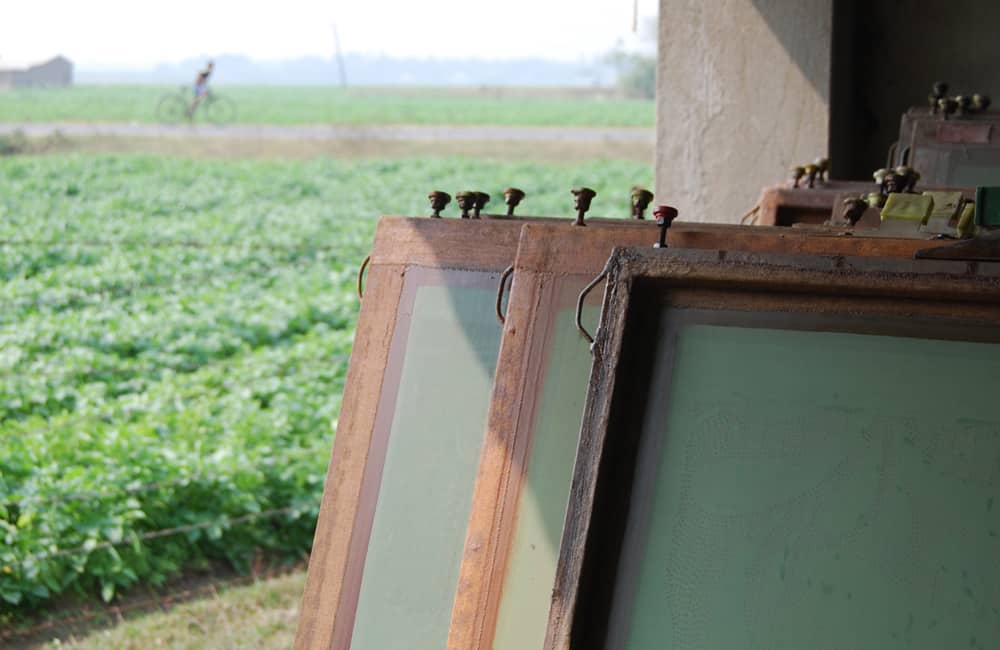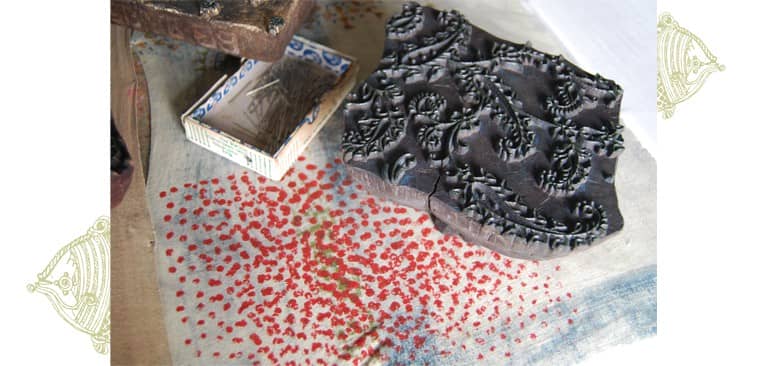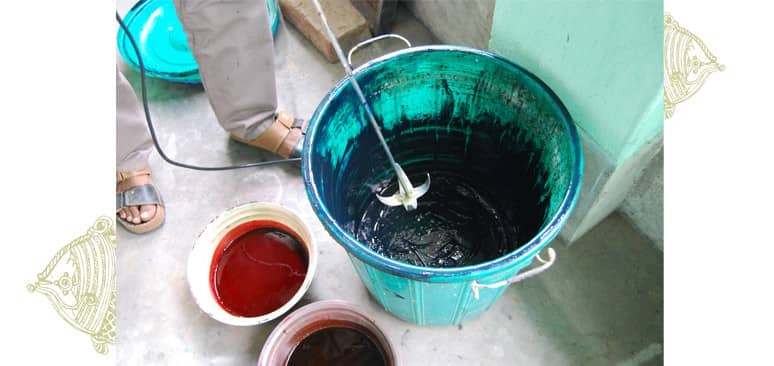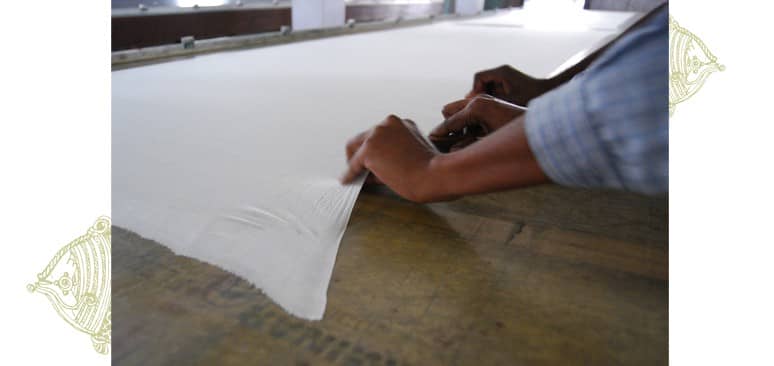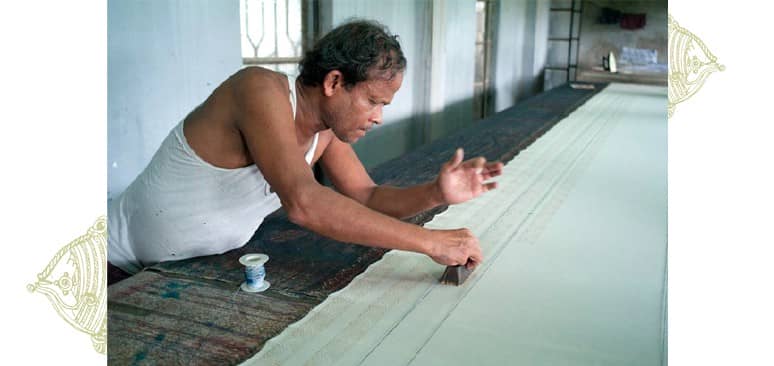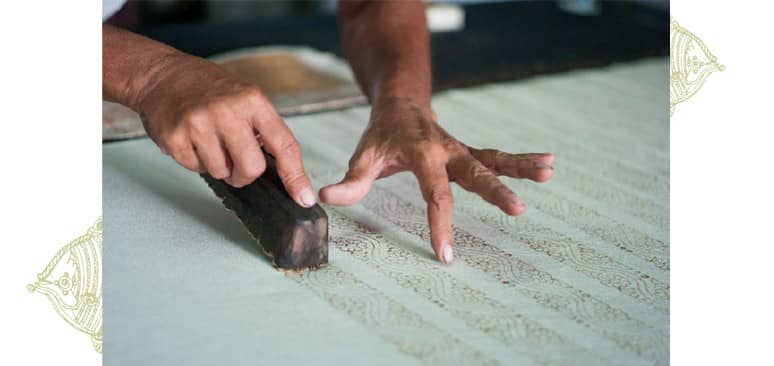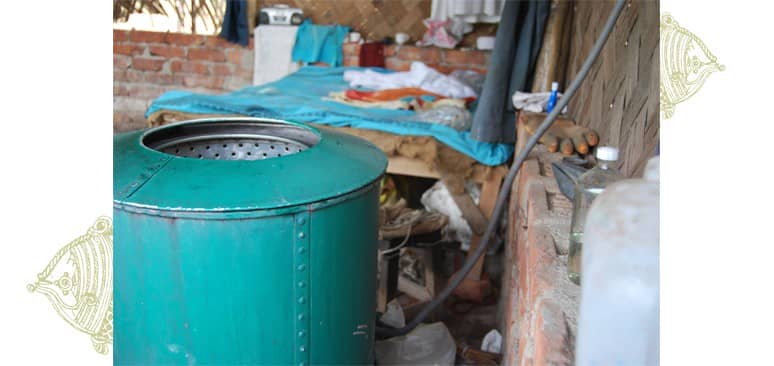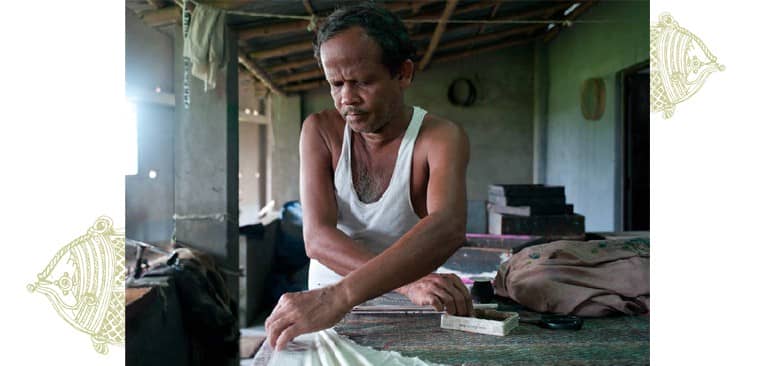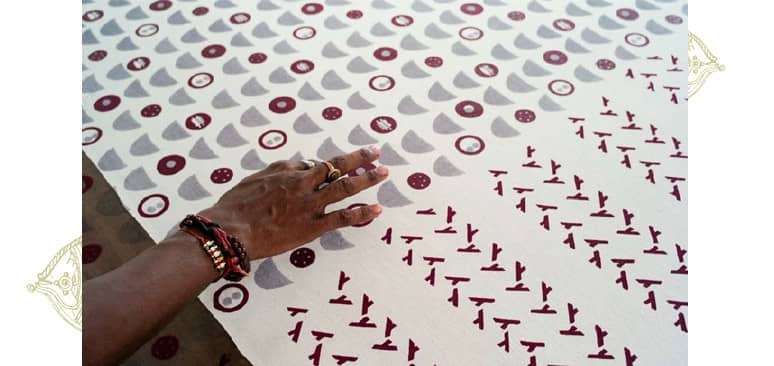Block Printing
Block printing is an ancient craft in India, where wooden blocks are carved with intricate patterns and these are dipped in color and repeatedly pressed on fabric. There are numerous motifs, colors and fabrics, typical to each region in India. These motifs have evolved over time and have great cultural significance. The patterns also evolved because of influences from Europe and the Middle East who have been major buyers of these fabrics over centuries.
In West Bengal, Burdhaman and Serampore have been centers for printing since the 1800’s for both textile and paper. Textiles printed here have a market all over the world and over time have evolved a distinct style and flavor.
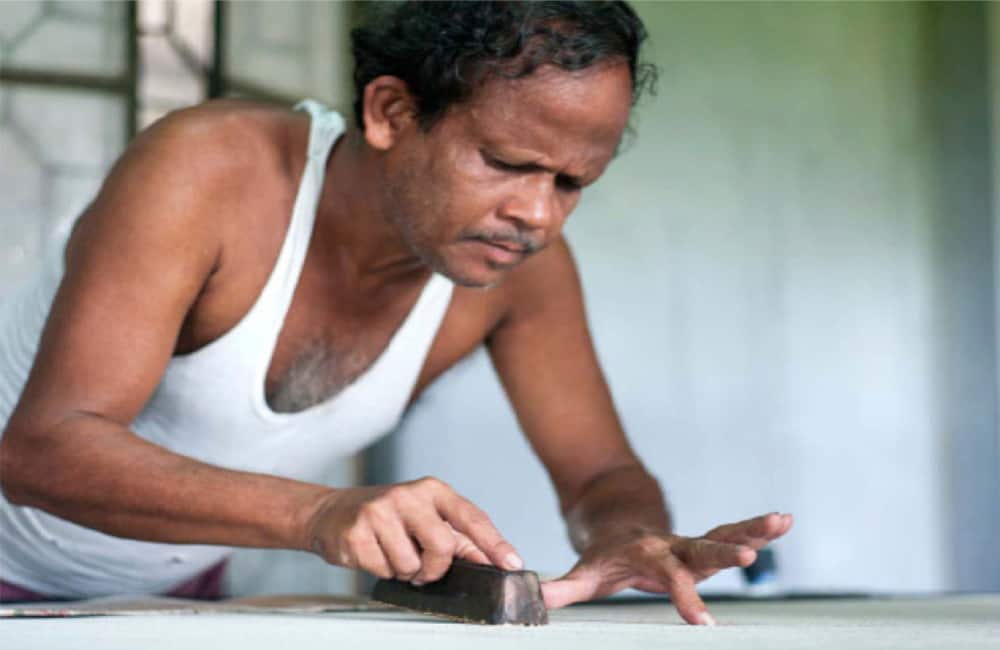
Examples of Printing
Screen printing
This technique is the most common form of textile printing and it involves the application of the printing paste through a fine screen placed in contact with the fabric to be printed. Screens are made by tightly stretching a fine mesh fabric across a metal frame. The design is created in reverse by blocking areas of the screen where no color is to be printed – a separate screen is used for each color.
The screen is then placed over the fabric and the printing paste is forced through the open areas of the screen using a flexible synthetic rubber or steel blade known as a squeegee. The squeegee is drawn steadily across the screen by hand at a constant angle and pressure. Screen-printing is now often automated, with hand screen-printing confined to the high-fashion industry.
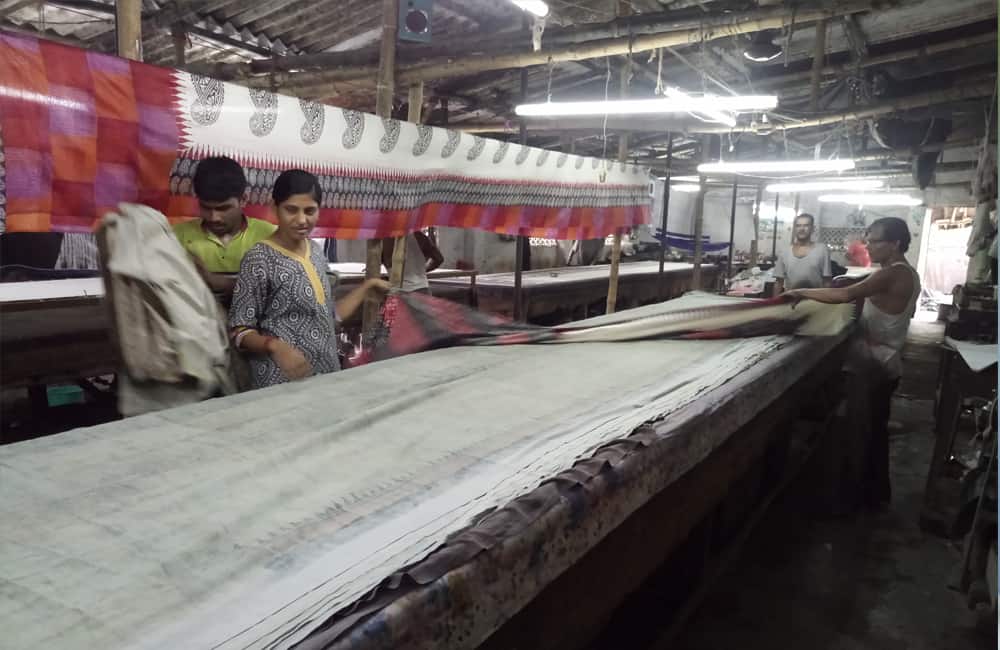
What about environmental impact?
Sasha’s Producer Groups use safe, low-impact printing and textile dyes (AZO and PCP free).
